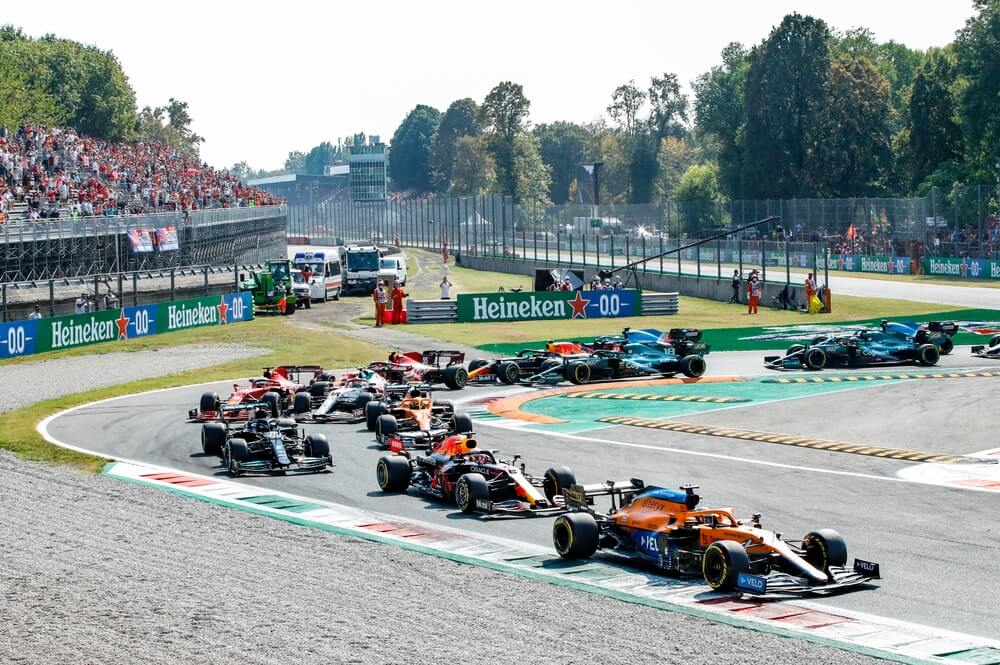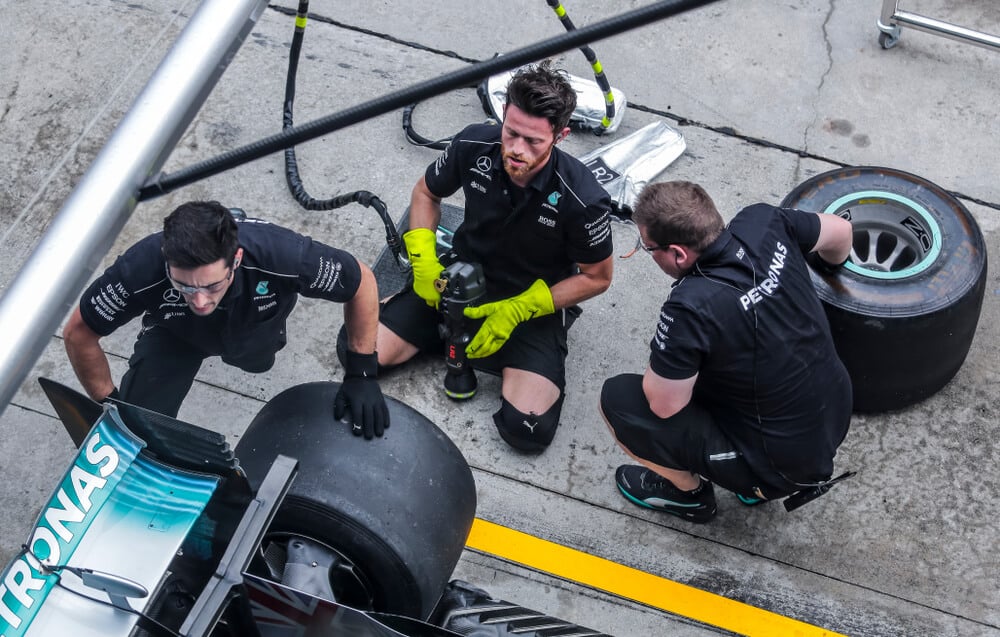Formula 1 is all about the details. From the sleek, aerodynamic designs of the cars to the tight racing that takes place on a track, everything about this high-octane sport is finely tuned. One important aspect of Formula 1 that often goes overlooked is the formation lap.
This can be an important element of a race strategy, and it involves nuances that only seasoned fans will recognize. If you’re new to Formula 1 or just looking to learn more about this important part of the race, read on! We’ll break down everything you need to know about the formation lap in Formula 1.
Table of Contents
Watch this video to understand more about the formation lap during a Formula 1 race.
What is the formation lap in F1?
The formation lap is the lap that takes place before the race begins. It is used to allow the drivers to warm up their tires and get a feel for the track conditions. The grid order for the formation lap is determined by qualifying results, with the fastest driver starting in the first place.
The drivers will follow the lead driver’s speed during the formation lap, who earned pole position in qualifying. As the drivers approach the start/finish line, they must observe the pit lane speed limit, which may require them to accelerate in order to keep up with the car in front of them. When the formation lap is in progress, drivers may not pass the vehicle in front of them unless it is disabled or becomes a hazard.
Fans will often witness drivers weaving on the course to help warm their tyres. During the formation lap, DRS is off, and since cars are moving so slowly, there is minimal downforce created, which might affect how certain vehicles handle the track. After finishing the lap, all drivers return to their grid box at the start/finish line.
Key takeaways
Here are some important aspects that you should know about formation lap in Formula 1:
- The formation lap is the lap prior to the start of the race.
- Cars line up on the grid in their qualifying order, and must maintain this order during the formation lap.
- The main purpose of the formation lap is to allow drivers and teams to make last-minute adjustments before the race begins.
- During the formation lap, drivers will often use the opportunity to warm up their tires and brakes.
- The formation lap can also be used as a chance for drivers to size up their competition and plan their race strategy.

Understanding formation lap
Now that we know the basics of what the formation lap is, let’s take a closer look at how it works and what goes into it.
Why is there a formation lap in F1?
You might be wondering why Formula 1 even has a formation lap. After all, the drivers are already on the track and ready to race, so why not just start the race right away? Well, there are actually a few reasons why the formation lap is important.
Warming up the cars
One of the main purposes of the formation lap is to allow drivers and teams to make last-minute adjustments before the race begins. This includes things like warming up the cars and getting a feel for the track conditions.
Warming up the car is important because it helps to get all the fluids flowing and bring the engine up to operating temperature. This can help to prevent engine damage and improve performance.
Getting a feel for the track conditions is also important, as it can help drivers to avoid any potential hazards on the course. By taking things slow on the formation lap, drivers can get a better idea of where the slippery sections of the track are and make adjustments accordingly.
Preparing drivers
Another reason for the formation lap is to help drivers prepare for the race. This includes things like getting in the right mindset and making sure all the safety equipment is properly in place.
It can be easy for drivers to get caught up in the excitement of the race and make mistakes. By taking things slow on the formation lap, drivers can help to avoid any unnecessary risks.
Making sure that all the safety equipment is properly in place is also important. This includes things like making sure the seatbelts are secure and the helmet visor is clean. By taking the time to check everything before the race begins, drivers can help to avoid any potential accidents.
Warming up the tires
One of the most important aspects of the formation lap is tire warm-up. Tires need to be warmed up before they can reach their peak performance, and this process can take a few laps.
By taking things slow on the formation lap, drivers can help to ensure that their tires are properly warmed up before the race begins. This can help to improve grip and tire wear over the course of the race.
Test all equipment in the car
Another reason for the formation lap is to allow drivers and teams to test all of the equipment in the car. This includes things like the engine, brakes, and suspension.
By taking the time to test everything before the race begins, drivers can help to avoid any potential problems during the race. This can help to improve both safety and performance.
Formation lap rules
As we’ve seen, the formation lap is an important part of Formula 1 racing. But what are the rules surrounding the formation lap? Let’s take a look.
For starters, there is a formation lap in every F1 race because it is an essential aspect of the Grand Prix that ensures all of the cars are fully warmed up and prepared to begin the race. At each Grand Prix, the regulations and procedures for formation laps are same.
However, certain formation laps need more time than others. This depends on the length of the track and the time it takes for the vehicles to complete a lap. For instance, since the circuit at Spa is far longer than that at Monaco, the formation lap will be longer.
And as we’ve already mentioned, the driver of the car with the fastest qualifying time sets the pace for the formation lap, and all the other drivers must keep up the pace. But drivers at the front of the field usually have to wait a long time for cars at the back of the grid to get into their final positions.
As we've seen, the danger comes when a car is released from the pit lane before it is safe for them to do so. If another car is approaching at high speed, there is a very real risk of a serious collision.
Frequently asked questions about formation lap
Do all F1 races have a formation lap?
When did F1 start with a formation lap?
How do you do a formation lap in F1?
Have there been any crashes in an F1 formation lap?
Conclusion
Overall, the formation lap is an important part of Formula 1 racing. It allows drivers and teams to make last-minute adjustments, prepare for the race, warm up the tires, and test all of the equipment in the car. By following the rules and procedures, drivers can help to ensure a safe and successful race.
Learn more about Formula One
Want to learn more about F1? Then visit our Formula 1 glossary and dictionary.



